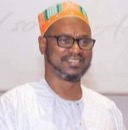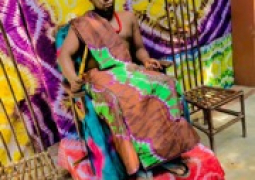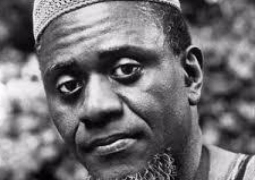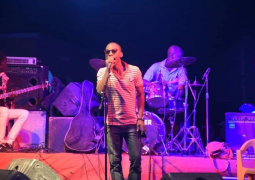
Conducting documentary research is always considered a challenge, particularly in establishing its authenticity. This is because the availability of secondary sources of information makes its worth questionable. The quality of such work and its authenticity are evaluated based on the writer’s credentials and the credibility of the analysis of the sequence of events that happened in history. Being an eminent intellectual, Dr Barry enjoys an excellent reputation in the West African region. The way in which he presents his analytical views about various historical events automatically grabs the reader’s attention. For those interested in the history of education, this book is one of the most authentic documents. It provides interesting information on the then prevailing educational system in the British Colonial period and is also an excellent source of reference for policymakers, planners, and development workers. Most importantly, it is a very comprehensive source of information for students of education and research scholars. (Dr Iftikhar Ahmad Baig, Professor of Education)
Author
 Dr Cherno Omar Barry is the Vice Chancellor/President of the International Open University. He has served as Permanent Secretary, Ministry of Higher Education, Research, Science and Technology, Ministry of Health and Social Welfare, Ministry of Youth and Sports, Ministry of Defence and at the Office of the President in The Gambia. He holds a B.A. in English from the Saint Mary’s University, Halifax, Canada, an M.A in Semiology, an MPhil and a PhD in Comparative literature from the University of Limoges, France. Cherno, an Associate Professor of Comparative Literature taught for eight years at the University of The Gambia before joining the National Commission for UNESCO. He later served for two years as Gambian representative to the Executive Board of UNESCO in Paris, France, before he was appointed Permanent Secretary 1, Office of the President and then later re-designated as the Permanent Secretary at the Ministry of Higher Education, Research, Science and Technology. Cherno is an accomplished academic, literary critic, editor and researcher.
Dr Cherno Omar Barry is the Vice Chancellor/President of the International Open University. He has served as Permanent Secretary, Ministry of Higher Education, Research, Science and Technology, Ministry of Health and Social Welfare, Ministry of Youth and Sports, Ministry of Defence and at the Office of the President in The Gambia. He holds a B.A. in English from the Saint Mary’s University, Halifax, Canada, an M.A in Semiology, an MPhil and a PhD in Comparative literature from the University of Limoges, France. Cherno, an Associate Professor of Comparative Literature taught for eight years at the University of The Gambia before joining the National Commission for UNESCO. He later served for two years as Gambian representative to the Executive Board of UNESCO in Paris, France, before he was appointed Permanent Secretary 1, Office of the President and then later re-designated as the Permanent Secretary at the Ministry of Higher Education, Research, Science and Technology. Cherno is an accomplished academic, literary critic, editor and researcher.
Excerpt
It is already a fact that the missionaries brought Western education within the boundaries of The Gambia. Second, two forms of education were instituted: liberal arts and technical education. Within the liberal arts sector, there was the development of the first learning materials. Ironically, not only were the first learning materials created to teach to read and write in the vernacular, but they were also created and developed by missionaries such as Hannah Kilham. Wolof has particularly served as a tool to evangelise as well as to teach both the young and the adult. Kilham produced advanced materials in both Wolof and Mandinka. Such materials stayed long after she left. It should also be noted that the Irish Spiritan Brother Florentine Mathews and the Methodist Robert McBaire both developed materials in the national languages. This either directly or indirectly inspired the production of the vernacular material conducted by other researchers and scholars notably Professor David Gamble.
The growing rise of schools built between 1820 and 1900 were mainly elementary schools. Establishing these schools, particularly within the interior of the country, was challenging trials because, during the periods in which these missionaries began evangelising and building schools, the Soninke-Marabout war was raging on and causing more rift and fear among the people in the interior. It was therefore very hard to convince the children of the wary and Islamised population to attend school. These accounted for a combination of factors that rendered the missions’ work tedious. It was until the beginning of the 20th century that the schools began to spread throughout that part of the country later known as the protectorate.
The curriculum in the elementary school was simple and to the point. It consisted of learning to read and write in English, the main objective being to be able to read the scriptures. The vernacular, as was mentioned earlier, was encouraged soon after the first school was built. The belief was that it was much simpler to preach in the local language as was done in other English-speaking countries such as Sierra Leone and Nigeria. The vernacular remained a subject for almost a century and a half, and it was even recommended in the first education reports. When the first high school came into existence in 1875, the curriculum included Religious Knowledge, English, Higher Mathematics, Greek, Latin, and Music (Sanneh 1983, 142).
It had always been a mainstream attribute to missionary principles to separate the sexes in school by creating one for boys and another for girls. This was practised in the British West African colonies. The first school built in Bathurst was dedicated to girls. Much later, both the Wesleyan Methodists and the Roman Catholics built high schools separating the sexes. However, most of the statistical records showed that the girls’ schools flourished much better than boys’ schools. Perhaps, the only explanation could be attributed mainly to management. Ironically, girls’ education, despite its early start and success in the colonial period, remained a challenge until the advent of the Second Republic.
The last decade of the twentieth and the beginning of the twenty-first centuries witnessed an expansion in the number of schools.
“You may sooner close your chapels than extending religion without education.” These words of Methodist Chairman Benjamin Tregaskis (1865-1874) could not have sounded truer to define the Missions’ task (Frederiks 2003, 240).
The primary objective of the missions was without doubt to attract as many converts as possible, and the strategy was to use education to help prepare many local priests to help evangelise the people. This had been a practice since in England, for education had always been a responsibility of the church.
The Church of England regarded education for all children as desirable. This was not a unanimously held view, however - influential taxpayers and those who benefited from employing children were less enthusiastic. But despite the doubters, the National Society for Promoting the Education of the Poor in the Principles of the Established Church (which, for obvious reasons, became generally known as the National Society) was founded in 1811. It aimed to provide a school in every parish (Gillard 2007).
This noble venture proved more successful within the British Empire where the colonised had little choice to contest the aims of the missions. Contrary to the other West African settlements, in The Gambia, most of the missionary efforts were exacting because they worked under a colonial government that found little interest in investing so much in this small colony and also that Islam was the way of life of the community. Thomas Baldwin, in his report published in 1950, remarked:
The churches in The Gambia operate among an increasingly preponderant Mohammedan community. There remain, it is true, considerable groups of pagans but they show little disposition to become Christians; the tide is flowing strongly with Islam. No doubt, as is usual in mass movements of this kind, many of the converts, have but a superficial understanding of their adopted faith and Christians are wont to mention this fact as though it were a ground of comfort. Experience, on the other hand, shows that adherence to Islam is usually permanent; it is a bleak prospect, humanly speaking, for the churches (Baldwin 1950, 5).
The endeavours of the missions were not hindered for they were impervious to the numerous obstacles enumerated herein and would undertake to pursue their goals despite some of the rules and regulations set by the colonial government during those trying times. Ralph Allen, Director of Education of the colonial government, in his report published in1939, wrote:
There is no doubt that most Mission Schools in the Protectorate were established primarily for purposes of proselytization while education was regarded as of importance only in so far as it served to further this primary aim. In most cases, there was no demand for a school and the result has been […] that in many cases schools have either had to close down or survive merely as religious classes. Even now there is only one Mission school that can feel that it satisfies a real local demand. This is the Methodist School, Georgetown, one of the oldest schools, which caters for the children of a small Christian population in McCarthy Island (Education in The Gambia - Present Organisation and Possible Future Development, 21) .
Yet the premise that the missions’ only objective was to evangelise and that the schools only served to ‘further this primary aim’ seemed unjustified considering the number of Muslim students who had completed their education in these mission schools and had excelled even in religious knowledge without ever being converted. Lamin Sanneh wrote in his West African Christianity: The Religious Impact (West African Christianity: The Religious Impact 1983) that:
The pressure to leave Islam as a precondition to admission appears to be minimal if it existed at all. For example, in 1955 the Methodist Boys’ High School had 140 pupils on its books. Of these twenty-nine were Methodists, twenty-four Anglicans and eighty-seven Muslim. In 1956 the Scripture Prize was won by a Muslim boy from Bansang (West African Christianity: The Religious Impact, 144-145).
This trend continued throughout the following years. It can therefore safely be said that even though Christianity brought Western education, Muslim children comprised the largest percentage of their students.
The relationship between Christians and Muslims remained cordial since the coming of the missionaries. Baldwin (Recommendations on the Aims, Scope, Content and Methods of Education in The Gambia 1950) attested that:
In the Gambia, one is impressed by the good relations that exist between the Christians and Moslems. But there are opportunities for closer co-operation, especially in education (Recommendations on the Aims, Scope, Content and Methods of Education in The Gambia, 6).
However, the missionaries’ failure to succeed in effectively converting the Muslim students could only be attributed to their trivial knowledge of Islam. Sanneh confirms this when he wrote that ‘Few missionaries bothered to learn anything about Islam or the Muslims among whom they serve as if to confirm the view that no reward would attend such labours’ (West African Christianity: The Religious Impact 1983, 145). Another issue is their erroneous judgement by drawing a parallel between Islam and paganism and their underestimation of the people’s total submission to Islam. During the Foday Kabba jihads, some chapels were burnt down and William Pullen, a Methodist cleric, had the Arabic tracts he was distributing thrown back at him. For these two incidents, the reaction was to conclude that Islam was aggressive (Frederiks 2003, 250). Frederiks reported that William Maud wrote, ‘Islam was as superficial and little more than paganism’ (We have Toiled All Night: Christianity in The Gambia 1456 - 2000 2003, 250). She also conveyed that ‘The Methodist did a very little theological reflection on the issue of Islam’ (Frederiks 2003, 252). She later revealed in her thesis, We have Toiled all Night: Christianity in The Gambia 1849-1916 that in Maud’s Memorandum on Mohammedanism, the latter wrote:
No organised effort has even been made to get at the Mohammedanism of West Africa. Christian workers have been divided between those who seem to think (and sometimes openly declare) that the Mohammedan cannot be won for Christ, those who believe he can but don't know-how, and those, perhaps the greater number who have thought nothing about it. […] It seems to me as if the first thing to be done if we are to win these Mohammedan people to Christ, whom we love and whom we would serve, is to make ourselves neighbourly. We must show that differences notwithstanding, we are their friends. We must gain their confidence, ministering to their bodily needs, familiarising them with Christian getting the children, humbling ourselves, after the mariner of our Master, and making ourselves of them as far as we can innocently and healthily can (Frederiks 2003, 252).
What Martha learnt from Maud’s report is, first, a different approach was necessary to evangelise a community so Islamised and second, there was a distinct difference between the Christian and Muslim catechists and their approaches. Nevertheless, the Gambian Muslim has, to this day, to be grateful for the establishment of schools, thanks to the Christian missionaries.
Thus, maintaining education in the colonies continued to become a challenge for the missionaries. The first serious challenge was the cost. The missions spent huge amounts of money to ensure that many schools were built in as many strategic places in both the St. Mary’s region and the interior. It took almost a century and a half before the colonial government got involved and provided grants to the mission schools. Another serious challenge, as earlier mentioned, was attracting the ‘Mohammedans’ to join the schools, particularly during the difficult times of war and uncertainties. Teachers were difficult to find as the training of teachers only started much later so the teachers were mainly Western catechists or those coming from Sierra Leone. Despite all these difficulties, the missions were able to succeed in constructing and maintaining schools in the most obscure parts of the interior of the country for a long time before the closure of many of these schools.





